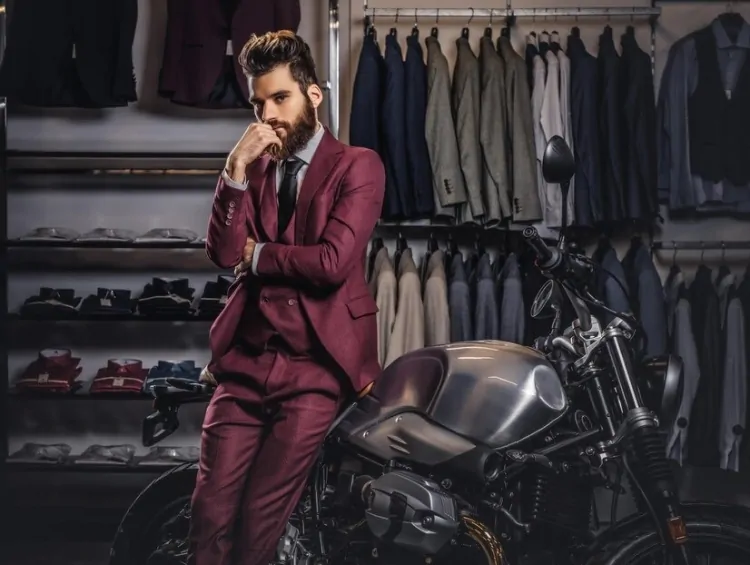Men's Clothing in India: A Journey Through Tradition and Contemporary Style
Explore the diverse world of men's clothing in India, featuring traditional attire, contemporary styles, and essential accessories for every occasion. Discover trends, tips, and cultural insights to elevate your wardrobe.

Men’s clothing in India is a unique amalgamation of traditional elements and modern influences. With its rich cultural history, India has always been known for its distinctive fashion identity, where every region offers a different take on men's apparel. From the opulent sherwanis and kurtas of North India to the simple yet elegant mundu and veshti of South India, the country’s clothing scene provides a diverse range of choices that cater to various occasions and personal tastes. Over the years, as fashion has evolved, so has the way Indian men approach their wardrobe, creating a seamless blend of classic and contemporary styles.
The Traditional Side of Men’s Clothing in India
India’s traditional attire for men is a reflection of the country's cultural heritage, with each state boasting its own unique style. For instance, the kurta-pajama, a long tunic paired with loose-fitting pants, is a staple in North Indian wardrobes, often worn during festivals and formal occasions. These outfits come in various fabrics like silk, cotton, and linen, and are often adorned with beautiful embroidery, zardozi work, or mirror embellishments. During grand celebrations like weddings, men often opt for heavily embellished sherwanis paired with churidar pants or dhotis, accessorized with a stole or turban to complete the regal look.
In South India, traditional attire like the mundu or veshti—rectangular pieces of cloth wrapped around the waist—are common. These garments, usually made of cotton or silk, are designed for comfort and breathability, making them ideal for the region’s warm climate. Similarly, the angarkha and bandhgala jackets are popular in Rajasthan and Gujarat, featuring intricate patterns and bright colors that symbolize the vibrancy of local culture.
The Influence of Western Fashion
While traditional garments hold a place of pride in Indian culture, Western influences have significantly shaped men’s clothing in India, especially in the last few decades. The global exposure and changing lifestyle patterns have led to a surge in Western-style clothing, including suits, shirts, trousers, and denim. Young men in metropolitan areas are increasingly seen sporting formal Western wear in professional settings, while casual wear like T-shirts and jeans have become go-to options for everyday use.
However, Indian designers have also found innovative ways to merge Western aesthetics with traditional elements, giving rise to Indo-Western fashion. For example, Nehru jackets are often paired with trousers or jeans, and kurtas are teamed up with blazers, creating a look that is both rooted in heritage and yet contemporary.
The Rise of Fusion Fashion
The evolution of men’s clothing in India is best exemplified by the growing popularity of fusion fashion. This style marries the best of Indian and Western designs, allowing men to express their individuality and cultural pride while maintaining a modern sensibility. Fusion wear has become a go-to choice for semi-formal and festive occasions. For instance, wearing a short kurta with jeans or pairing a dhoti-style trouser with a formal shirt is becoming a trend.
Brands and designers are constantly experimenting with silhouettes, fabrics, and motifs to create garments that resonate with the modern Indian man. The result is a diverse range of apparel that caters to different tastes and preferences, ensuring that there is something for everyone, whether one leans towards tradition or prefers a contemporary look.
Dressing for Different Occasions
Men’s clothing in India is inherently occasion-driven, with different styles reserved for different events. For weddings and festivals, ethnic wear like sherwanis, bandhgala suits, and kurta-pajamas are the preferred choices. These garments are often made using luxurious fabrics like silk, brocade, and velvet, and are richly adorned with traditional embroidery or beadwork.
For more casual or office settings, the focus shifts to comfort and functionality. Western wear, such as crisp formal shirts, trousers, and business suits, has become a mainstay in corporate environments. Meanwhile, smart casual attire, which includes polo shirts, chinos, and loafers, is popular for relaxed settings like a weekend brunch or an informal business meeting.
The Role of Fabrics and Textures
One of the standout features of men’s clothing in India is the emphasis on fabrics and textures. Indian textiles are world-renowned for their quality and craftsmanship, with materials like cotton, khadi, silk, and linen playing a crucial role in garment construction. Khadi, a handwoven fabric, has seen a resurgence as a symbol of sustainable fashion, while silk is often reserved for grand celebrations. Fabrics like jute, tussar silk, and handloom cotton are used in innovative ways to create versatile clothing suitable for both traditional and modern outfits.
The Growing Influence of Designers and Brands
In recent years, several Indian designers and fashion brands have gained international recognition for their work in men’s fashion. Designers like Sabyasachi Mukherjee, Manish Malhotra, and Rohit Bal have revolutionized the way traditional attire is perceived, making it more appealing to the younger generation. They have introduced new styles, patterns, and motifs that balance tradition with innovation, making ethnic wear a preferred choice for younger men during festive occasions.
At the same time, brands like Raymond, FabIndia, Manyavar, and Peter England have carved a niche for themselves in the ready-to-wear segment, offering a wide range of apparel from everyday wear to festive collections. Their focus on quality, fit, and contemporary designs has helped redefine men’s clothing in India.
Conclusion
Men’s clothing in India is a vivid tapestry of styles that celebrates the country’s cultural diversity while embracing global influences. It has evolved significantly over the years, reflecting changing tastes and preferences. The modern Indian man is not afraid to experiment, blending the elegance of traditional wear with the comfort and sophistication of Western styles. As fashion continues to evolve, men’s clothing in India will likely keep pushing boundaries, offering new and exciting ways for men to express themselves.
What's Your Reaction?















